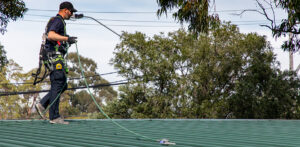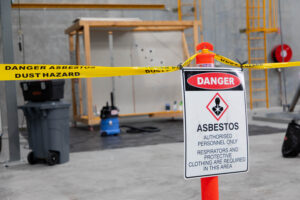Winter may be a wonderland for some, but the cooler weather brings with it a new set of workplace safety challenges everyone should be aware of.
Ahhhh, winter. The cooler months are often welcomed with open arms following another stretch of long, hot summer days. But the new season brings with it a new set of safety risks for those working at heights, and outdoors more generally.
The most important thing to remember when working outside in colder times is dressing for the conditions.
Wear appropriate clothing
Just as sun protection in summer is important, so too is making sure you are kept warm and comfortable during winter.
Jackets, jumpers, long-sleeved shirts and full-length pants are all vital to keeping your core temperature where it needs to be. Keeping your core temperature up helps to stave off the risk of catching a cold, influenza or something worse like hypothermia.
Ideally, no one should be working outside in the rain, but sometimes it is unavoidable. If you find yourself out in the weather, you should make sure you are keeping yourself as dry as possible. Waterproof clothing such as raincoats can help keep you dry.
Your extremities also need looking after during winter. Gloves can help keep your hands warm and mobile. We have all experienced those cold mornings where you struggle to get your hands to work properly. It is not only uncomfortable, it also increases the risk that you lose your grip on a tool and letting it fall.
Check the weather
No matter the season, you should be planning your work around the weather. Keeping an eye on weather forecasts can help you try and minimise the chance of needing to complete a task during inclement weather.
Even if you are closely monitoring the forecast, you should always keep an eye on the sky and watch for changing conditions.
Care should be taken early in the morning. Frosts can occur on colder mornings, resulting in surfaces becoming slippery. Slippery surfaces are a major cause of workplace falls.
Rain and wind are also ever-present risks during winter. Like frosts, rain can make surfaces slippery. It can also degrade materials not designed to be exposed to such conditions if installation has not been completed.
Wind chill can significantly reduce the apparent temperature, making work environments colder than the measured temperature would suggest.
Strong winds can also catch building materials, which can create a hazard for workers and people nearby.
Protecting others
For anyone working at heights, there needs to be consideration given to how to best protect others from the risk of injury while you are going about your work.
During winter, there can be an increased risk of tools and materials being dropped because of the colder weather.
Dropped tools can cause passers-by injuries if they are struck. Using tool tethers can protect people from this risk by catching a dropped tool. They also make it easier for a worker to retrieve a dropped tool, reducing the amount of time lost to having to go and find dropped equipment.
Working in winter can be refreshing compared to working in summer, but that does not mean it is without risks. Everyone working outdoors – at heights or on the ground – needs to be aware of the risks and work to protect their colleagues and the public.





